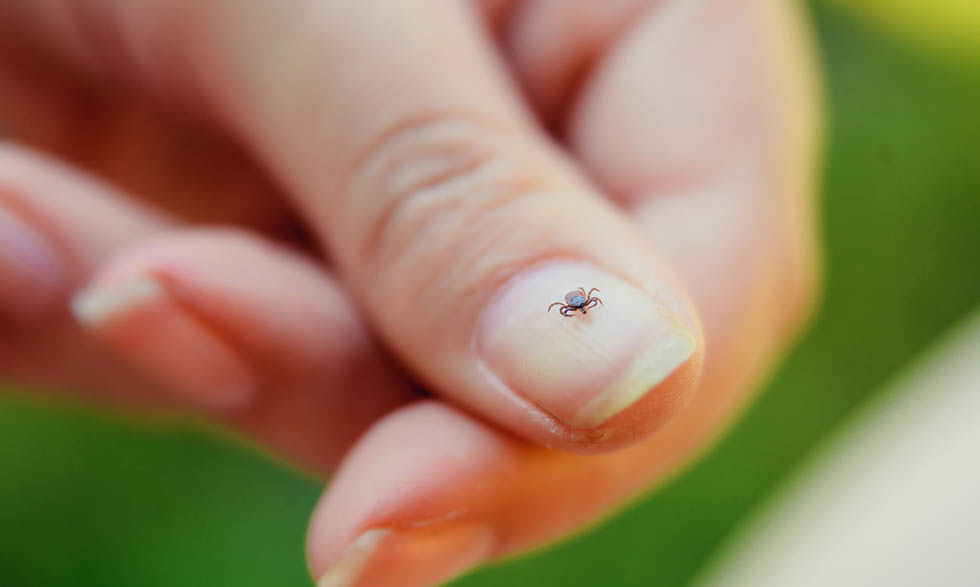
Blacklegged ticks, or deer ticks, are tiny. But the problems they cause, like Lyme disease, can be big.
Most humans are infected through the bites of immature deer ticks called nymphs. Nymphs are difficult to see; they’re no bigger than a poppy seed. Adult ticks are no bigger than a sesame seed.
Lyme disease, a bacterial infection you can get through a bite from an infected blacklegged tick, affects an estimated 300,000 Americans a year. The number of counties in areas at high risk for Lyme disease has increased more than 300% in the past 20 years.
“The best advice is don’t count on becoming immune. You can get Lyme disease multiple times.”
– Adriana Marques, M.D.
The infection, in its early stages, can cause flu-like symptoms and an expanding circular rash that can be solid red or appear like a bull’s-eye. In later stages, people can have additional rashes, paralysis of the muscles of the face, and arthritis with joint swelling.
The National Institute of Allergy and Infectious Diseases (NIAID) supports research aimed at both preventing Lyme disease and finding faster, more accurate tests for detecting it in its early stages, when it’s easier to treat.
“It’s a complicated, thought-provoking task,” says infectious disease expert Adriana Marques, M.D. Dr. Marques, who is chief of NIAID’s Lyme Disease Studies Unit, discusses the most recent research on Lyme disease and how people can protect themselves.
What progress has been made toward a better, quicker test for Lyme disease?
Among some of the new technologies being studied is a test of skin taken from the characteristic red rash that many people get with Lyme disease. There’s also research into a more sensitive blood test that can detect the germs not only from Lyme disease, but also several other tick-related illnesses.
There was a Lyme disease vaccine that was pulled from the market in 2002. Are there any efforts toward a new vaccine?
We do have Lyme disease vaccines for dogs, but unfortunately no vaccine for human use is currently available. There is one vaccine that is being studied in clinical trials. Other new products are still several years away.
Can people become immune to Lyme disease, especially if they live in an area with a large tick population, such as the Northeast or Upper Midwest in the U.S.?
The best advice is don’t count on becoming immune. You can get Lyme disease multiple times. There is some evidence that people might become immune if they get exactly the same bacteria they got before, but the chances are very low. Some Lyme disease-carrying ticks can be infected with other diseases as well.
What’s the most important thing people can do to protect themselves?
Read about the disease. If you are in an area where Lyme disease is frequently diagnosed, learn how to protect yourself and how to recognize symptoms. Get antibiotic treatment started quickly if you or your doctor suspects you might have early Lyme disease—do not wait for lab test results. In most cases, people with Lyme disease will recover with no problem.
